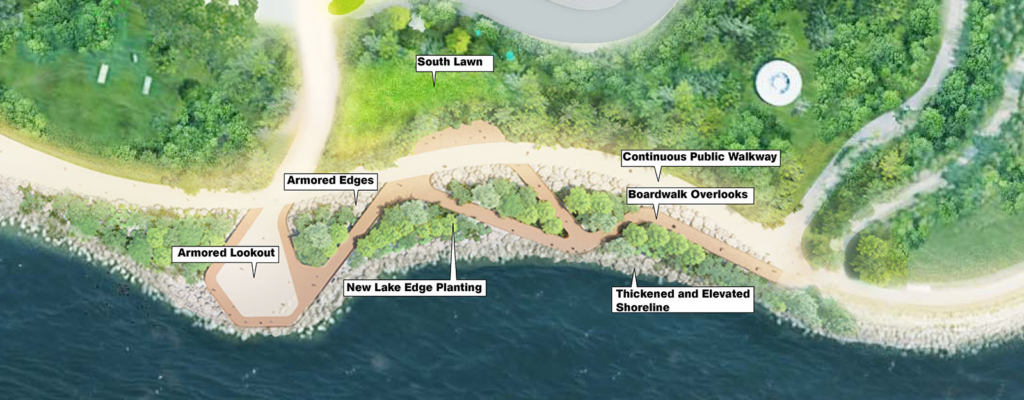As the Fall 2022 engagement period comes to a close, the study-specific evaluation criteria will be finalized. Each design concept identified for each of the five zones will be evaluated using the evaluation criteria to create a preferred design that ultimately meets the overall vision of the site and redevelopment concept. Results of this evaluation process and the preferred design will be presented to the public in Spring 2023.
Each conceptual design concept proposed will be evaluated by the Environmental Assessment team according to the study-specific evaluation criteria, and its potential effects on the following:






An example of how the evaluation criteria will be applied to each focus zone is presented for Zone 1: Water’s Edge to provide an understanding of the evaluation process. An example from the Natural and Social Environment categories has been included.
Applying the Evaluation Criteria to the Concepts – Example.
| Category | Natural Environment | Social Environment |
|---|---|---|
| Objective | Protect and enhance terrestrial and aquatic natural features and linkages. | Facilitate recreational opportunities. |
| Criteria | Terrestrial systems and habitat. | Provide recreational opportunities for users. |
| Indicator(s) | Change in the quality of available habitat. | Ability for users to participate in recreational activities. |
| Measure/Parameter | Increase or decrease of tree cover. | Number of recreational areas and/or opportunities. |
| Potential Effect | Baseline: No change Option A – Urban and Active: Increase in tree cover. Option B – Green Gateway: Significant increase in tree cover. | Baseline: No change. Option A – Urban and Active: Increase in pathways, access points and recreational areas. Option B – Green Gateway: Increase in pathways. |
| Preference | Baseline: Least preferred Option A – Urban and Active: Less preferred. Option B – Green Gateway: Preferred. | Baseline: Least preferred. Option A – Urban and Active: Preferred. Option B – Green Gateway: Less preferred. |
| Rational | Per the evaluation criteria, Option B is preferred as it has the potential to increase tree cover more than Option A. | Per the evaluation criteria, Option A is preferred as it has the potential to provide more recreational opportunities for users. |

